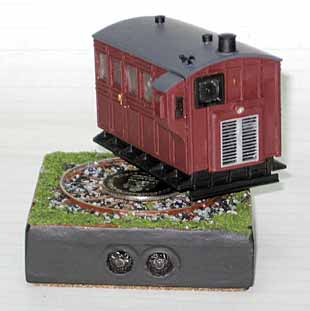This was mentioned in a video with a "small" oval layout on all-day display. My take is:
Running the trains slowly ... makes the trains seem really slow. This is a sure-fire way to bore the general public, and children in particular. Maybe the layout will seem bigger, but the action will be slower and less interesting to the average viewer. Aren't we trying to get more folks interested in the hobby, and impress them with the dynamic aspects of real railroads?
Slow model trains also portray railroads as archaic and outdated. Speed is an essential component of modern transportation, the whole idea being to move things expediently before the cargo becomes outdated.
The other extreme is running the trains too fast, which is widely criticized as toy-like and unrealistic. Yeah I know.
I generally prefer to see trains running at realistic moderate speeds of 35-55 mph, not slowly at 15-25 mph, and not real fast at 90+ mph. IMO a much better trick for "making the layout seem bigger", is to have the train disappear from view before it reappears. This gives some illusion of coming and going to other places. An even better tactic is to run different trains alternately. Plain ovals should be disguised somehow for a better effect. These are effective ways to enhance interest even on small layouts.
I have a real small HO layout (one of various different layouts) on which I run trains real slow, because it's such a short trip on tight curves. It holds my attention for a couple minutes at a time, then I go run different trains on another layout for a change of pace.






